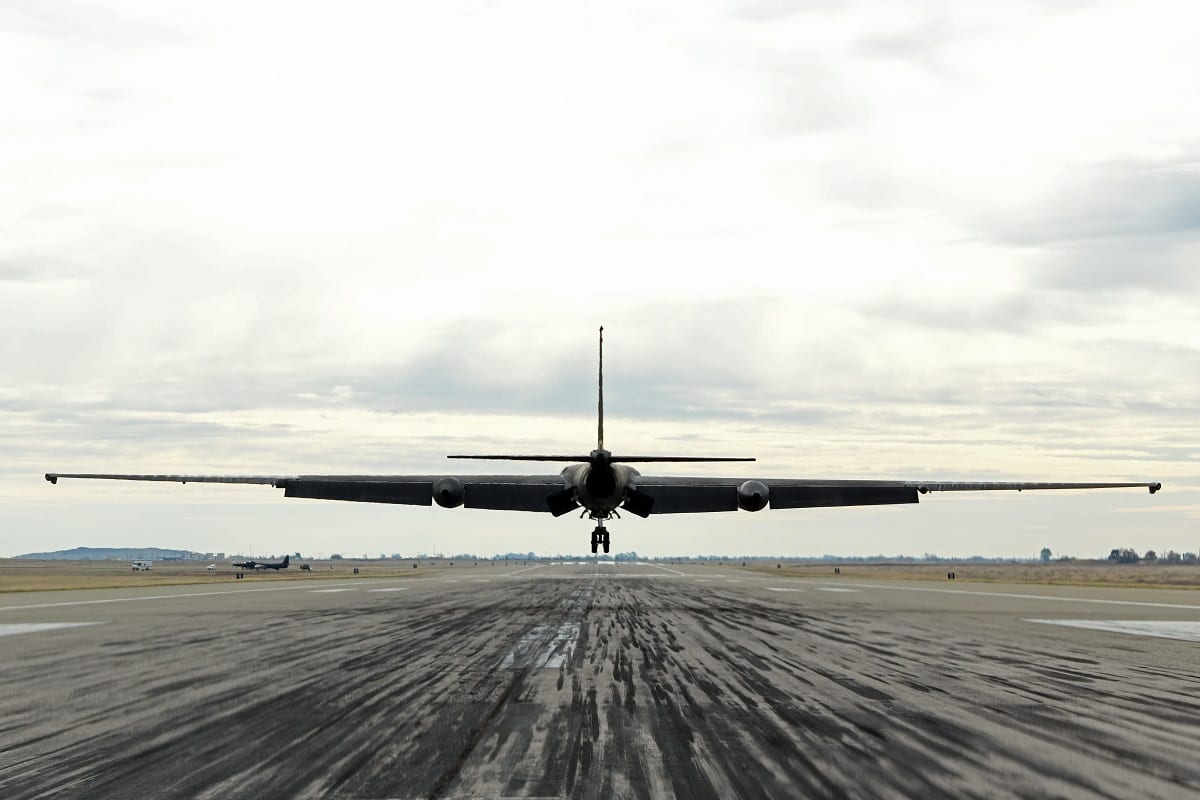
A U-2 Dragon Lady assigned to the 9th Reconnaissance Wing prepares to land at Beale AFB, Calif. on Dec. 15 (U.S. Air Force)
In what the U.S. Air Force said was the first time artificial intelligence (AI) has commanded a military system, an AI algorithm helped to steer the radar of a Lockheed Martin U-2 reconnaissance aircraft and navigate the plane in a Dec. 15 flight from Beale AFB, Caif.
Some of the 27 operational U-2s carry the Raytheon Advanced Synthetic Aperture Radar System-2A (ASARS-2A) in their nose.
The Air Force fiscal 2021 budget requests about $48 million for the “high altitude, deep look” Raytheon ASARS-2B radar, which is to double the range of the ASARS-2A. The ASARS-2B program “replaces the front end components” of the ASARS-2A “to alleviate reduction in current ASARS-2A capability starting in FY ’21 [fiscal 2021] due to significant diminishing manufacturing sources and material shortages (DMSMS) issues,” the Air Force has said.
Air Combat Command’s (ACC) U-2 Federal Laboratory researchers at Beale AFB developed the ARTUµ AI algorithm and trained it “to execute specific in-flight tasks that otherwise would be done by the pilot,” the Air Force said on Dec. 16.
“Putting AI safely in command of a U.S. military system for the first time ushers in a new age of human-machine teaming and algorithmic competition,” Air Force acquisition chief Will Roper said in a statement. “Failing to realize AI’s full potential will mean ceding decision advantage to our adversaries.”

Maj. “Vudu”, a U-2 Dragon Lady pilot assigned to the 9th Reconnaissance Wing, prepares to taxi after returning from a training sortie at Beale Air Force, Calif., Dec. 15, 2020. The AI algorithm, developed by Air Combat Command’s U-2 Federal Laboratory, trained the AI to execute specific in-flight tasks that would otherwise be done by the pilot. (U.S. Air Force)
During the Dec. 15 flight–a reconnaissance mission for a simulated missile strike, the ARTUµ algorithm helped navigate the aircraft and used the radar to search for enemy missile launchers, while the pilot flew the aircraft, coordinated with the AI on sensor operation, and used the radar to look for “threatening aircraft,” the Air Force said.
“The flight was part of a precisely constructed scenario which pitted the AI against another dynamic computer algorithm in order to prove the new technology,” per the service. “After takeoff, the sensor control was positively handed-off to ARTUµ who then manipulated the sensor, based off insight previously learned from over a half-million computer simulated training iterations. The pilot and AI successfully teamed to share the sensor and achieve the mission objectives.”
The venerable U-2 has been a showcase for Air Force machine learning efforts.

This flight marks a major leap forward for national defense as artificial intelligence took flight aboard a military aircraft for the first time in the history of the Department of Defense. (U.S. Air Force)
Under a $50 million Avionics Tech Refresh (ATR) contract, Lockheed Martin is to update the U-2 avionics suite with new cockpit displays and a new mission computer designed to Open Mission Systems (OMS) standards that will move the U-2 toward the Air Force’s Advanced Battle Management System (ABMS) approach to link sensors from a variety of platforms.
Last month, Lockheed Martin demonstrated distributed processing using Kubernetes aboard the U-2, and the Air Force has said that the U-2’s computers have run advanced machine learning algorithms without degrading the effectiveness of the aircraft’s flight and mission systems.
The Dec. 15 U-2 flight “directly answers the [2018] National Defense Strategy’s call to invest in autonomous systems,” Air Force Secretary Barbara Barrett said in a statement. “Innovations in artificial intelligence will transform both the air and space domains.”